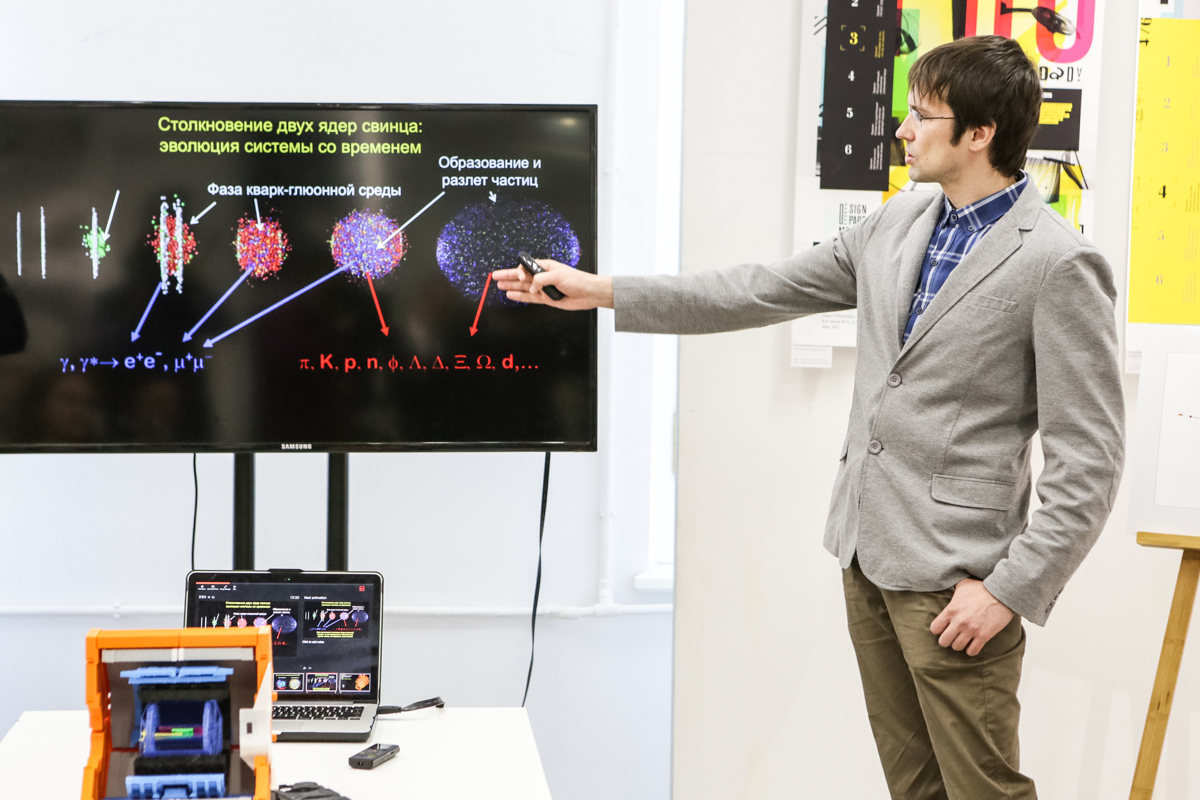Inventions for experiments on LHC and NICA: SPbU scientists

The physicists from St Petersburg University have presented the latest research inventions for the experiments in CERN and on the Russian accelerator complex NICA. What opportunities SPbU has to take part in the mega-project will be discussed in Dubna, Moscow in April 2018. That is the focus of the traditional Science-Lunch at SPbU.
For over a quarter of century, the scientists from St Petersburg University, by using the LHC during the ALICE, have been searching for a new state of the matter — quark-gluon plasma.
“Nothing have the humans invented more complex than the LHC. The ALICE has brought together 1,800 scientists from 41 countries, and St Petersburg is one of the institutions that represent Russia. Twenty five years ago, we solved the task that seemed to be impossible and therefore joined the world’s biggest collaboration”, — said the Director of the Laboratory of Ultra-High Energy Physics Grigorii Feofilov who took part during the videoconference with the control centre of the ALICE.
The scientists were also greeted by the head of ALICE Federico Antinori. He thanked all our scientists for their contribution in the study of the relativistic nuclear collisions.
St Petersburg University joined the collaboration as the main developer of the two central systems of the ALICE. No other university in Russia has such a privilege. Today, the SPbU’s physicists take part in two experiments: in 2006, they joined the NA61/SHINE. They have already invented the Small Acceptance Vertex Detector and are developing the Large Acceptance Vertex Detector.
Now the LHC detectors are undergoing modernisation. In 2020, we are planning to start new experiments.
For the last years, the LHC operators have increased the intensity of the beams, and the system therefore has to be adapted to new needs. Now we are working on the pixel detectors that have a great potential for the future. They are very light, efficient devices with low power consumption. The detector that we have created for the ALICE has no equals in Russia. In fact, each pixel is an independent detector.
Director of the SPbU’s Laboratory Nuclear Processes Vladimir Zherebchevskii
The Science-Lunch also saw other inventions by SPbU’s scientists: an ultra-light SFRP device with a built-in cooling system to install the detectors. Although its weight is only 16 grams, it is nevertheless incredibly strong as it can hold detectors up to 5 kg. “Such devices are used in the LHC, and we are planning to propose them for the NICA. Presumably, they will be used in the outer space industry,” — said Vladimir Zherebchevskii.
These inventions, including helium ion guide, as well as theoretical materials and data processing software developed by the SPbU’s scientists, will be presented during the first meeting of the groups that take part in the NICA that is to be held in Dubna.
“St Petersburg University has unique scientists who create technologies for the world’s leading platforms. Now, we are upgrading the detector of the ALICE and planning to visit Dubna to discuss the opportunities to work on the tracking system for the NICA”, — said the junior research fellow of the Laboratory of the Ultra-High Energy Physics Andrei Seriakov.

